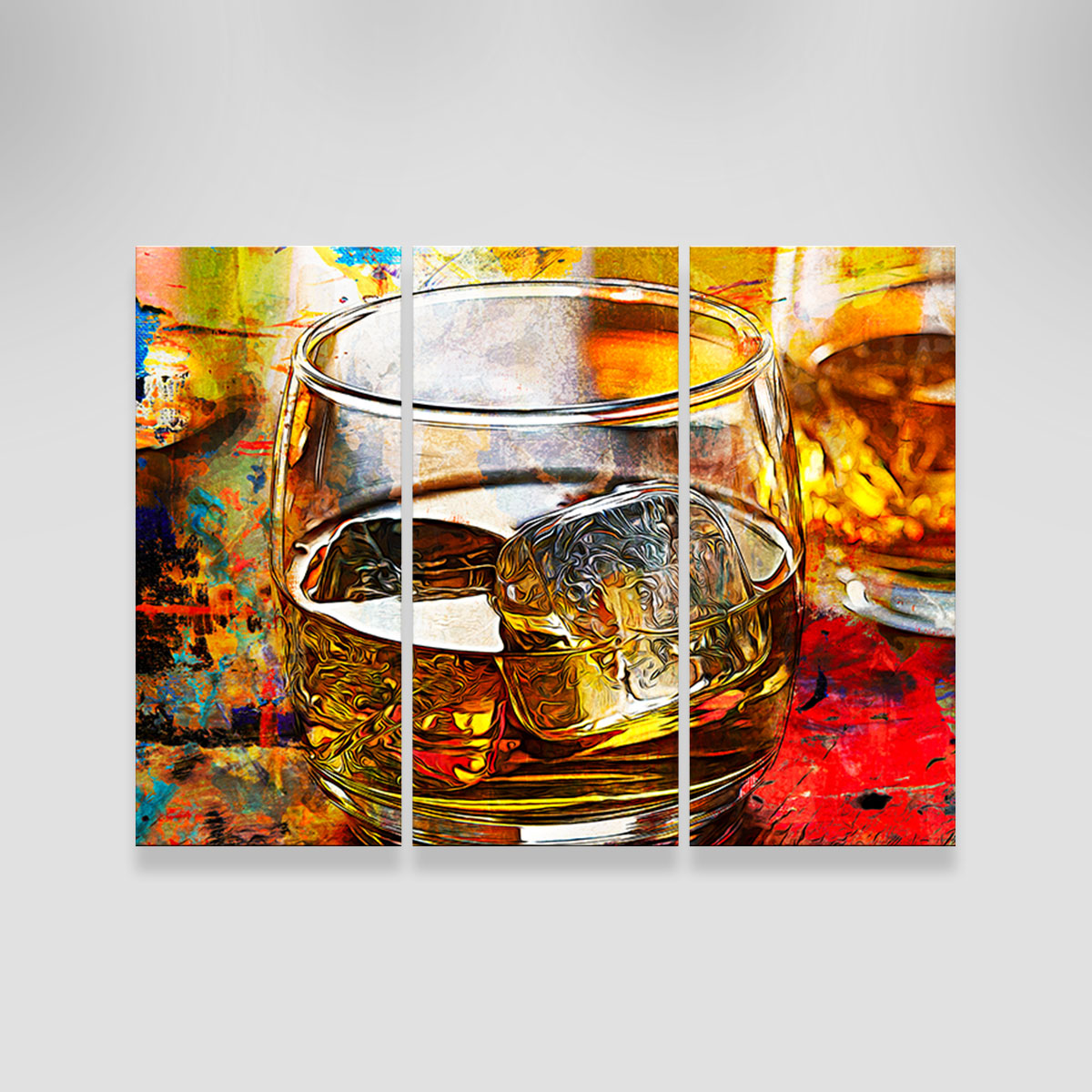Whiskey Art: Capturing the Essence of Distillation in Every Brushstroke
Whiskey Art: Capturing the Essence of Distillation in Every Brushstroke
Blog Article
Capturing the Significance of Whiskey Art Via Special Visual Representations and Designs
The art of bourbon extends beyond the liquid itself, showing up through a range of aesthetic depictions that envelop its storied heritage and craftsmanship. What stays to be revealed is just how these developing styles show not just the bourbon itself however additionally the transforming landscape of creative interpretation. Realism Art.
The Background of Bourbon Art

As whiskey production spread, so also did the desire to raise its experience via art. From the intricate engravings on very early barrels to the fancy tags of modern-day bottles, each aspect shows an one-of-a-kind artistic vision, working as an aesthetic story of the whiskey's heritage.
In the 18th and 19th centuries, the increase of the commercial change further improved scotch art, causing cutting-edge packaging and advertising that caught customer focus. Musicians and developers began experimenting with appearances, imbuing whiskey-related images with symbolic meanings that conveyed notions of neighborhood, workmanship, and practice.
Today, bourbon art remains to advance, mixing typical approaches with modern art kinds. Realism Art. This recurring discussion in between the spirit and its visual representation underscores the enduring bond in between bourbon and society, enhancing the overall experience for enthusiasts worldwide
Iconic Container Layouts
While lots of aspects contribute to the allure of whiskey, legendary container styles play a critical role fit customer understanding and improving the overall experience. The aesthetic discussion of scotch bottles is not just an aesthetic consideration; it works as a bridge in between the product and the customer, stimulating feelings and setting assumptions.
Unique shapes, materials, and closures can boost a scotch brand's identification, making it instantaneously identifiable on crowded racks. The classic Glenfiddich container, with its stylish conical silhouette, conveys a feeling of custom and workmanship, while the strong, modern-day style of the Balvenie container reflects technology and class. The usage of tinted glass or distinct structures can recommend the quality and personality of the bourbon within.
Iconic styles often integrate components of cultural heritage, representing the brand name's background and connection to its roots. Brand Names like Jack Daniel's make use of a straightforward, durable layout that resonates with its American whiskey heritage. Eventually, the influence of container design extends beyond simple capability; it envelops the significance of the brand, inviting consumers to check out and delight in the abundant tapestry of bourbon society.
Label Artwork and Branding
Bottle designs frequently set the stage for what customers can anticipate, yet tag art work and branding play a similarly considerable function in interacting a whiskey's identity. The tag offers as the initial factor of get in touch with between the item and the customer, encapsulating the essence of the bourbon within its aesthetic aspects.
Efficient label art work incorporates color, imagery, and typography to develop a story that resonates with the brand name's heritage and target market. A label including classic font styles and intricate pictures may stimulate a sense of practice and craftsmanship, appealing to aficionados. On the other hand, vibrant colors and modern style elements may attract a more youthful demographic looking for development and exhilaration.


Photography and Visual Narration
Recording the essence of whiskey with digital photography and aesthetic narration is an art kind that elevates the brand experience. This medium transcends simple item depiction, diving right into the intricate narratives that surround each bottle. By utilizing compelling images, digital photographers can stimulate feelings that reverberate with customers, inevitably forging a deeper connection to the visit here whiskey brand.
Visual narration in whiskey digital photography frequently uses rich structures, illumination, and structure to highlight the special features of the spirit. The interaction of light and darkness can emphasize the brownish-yellow tones of bourbon, while the selection of history aspects-- such as rustic barrels or sophisticated glasses-- can strengthen the brand's heritage or way of life associations.
Additionally, catching the ritualistic aspects of whiskey consumption, from the putting to the sampling, welcomes audiences into a sensory experience, allowing them to picture the tastes and fragrances that wait for. Each photo not only showcases the product however likewise narrates of craftsmanship, practice, and the minutes that scotch can enhance - Realism Art. Hence, photography becomes an effective device in articulating the identification of scotch brands, placing them within the wider cultural landscape
Arising Patterns in Whiskey Art
The evolution of scotch art is significantly formed by contemporary patterns that mirror broader social changes and consumer choices. This change not only highlights the value of sustainability yet also improves the story surrounding scotch manufacturing.
In addition, digital art has risen in appeal, allowing for ingenious depictions of whiskey. Artists are leveraging modern technology to craft immersive experiences, such as increased reality setups that involve visitors and provide a deeper understanding of scotch's social value. This trend likewise reaches social media sites platforms, where visually striking content gathers interest and promotes community amongst enthusiasts.
Furthermore, cooperations between scotch brands and musicians are coming to be extra commonplace. These partnerships yield limited-edition packaging designs and exclusive artworks that celebrate both the craftsmanship of whiskey and the creativity of artists. As whiskey art remains to develop, these emerging trends will definitely form its future, cultivating a vibrant crossway of culture, sustainability, and innovation within the scotch community.
Conclusion
Finally, the art of whiskey encompasses a varied variety of aesthetic representations that reflect its rich heritage and workmanship. From famous container designs and intricate tag art work to compelling photography, each component adds to a wider narrative that enhances the customer's experience. As emerging trends, such as electronic art and sustainability, proceed to shape this imaginative landscape, the complex identity of whiskey continues to be a withstanding source of social link and exploration.
In conclusion, the art of bourbon incorporates a varied variety of visual representations that mirror its abundant heritage and workmanship.
Report this page